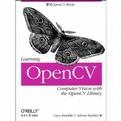学习OpenCV
出版时间:2009-4 出版社:东南大学出版社 作者:(美)布拉德斯基,(美)克勒 著 页数:555 字数:605000
Tag标签:无
内容概要
《学习0penCV》将你置身于迅速发展的计算机视觉领域。本书作者是免费开源0penCV的发起人,这本书为你介绍了计算机视觉,例证了如何迅速建立使计算机能“看”的应用程序,以及如何基于计算机获取的数据作出决策。 计算机视觉几乎随处可见:安全系统、管理检验系统、医学图像分析、无人机等。它将Google地图和Google地球结合在一起,在LCD屏幕上核对像素,确保衬衫上的每一个针脚都完全缝合。OpenCV提供了一个简易实用的计算机视觉框架以及一个含有超过500种可以实时运行视觉代码的函数的综合库。《学习OpenCV》在每一章里教授任何OpenCV的开发者或热爱者如何在这些实战经验的帮助下迅速掌握该软件。这本书包括了如下内容: 对0penCV全面详尽的介绍 从照相机中导入图片 转换图像 分割图像和形状匹配 模式识别,包括人脸检测 两到三个计量单位间的跟踪和运动 立体视觉中的3D再现 机器学习算法 使机器能看见是一个具有挑战却又充满乐趣的目标。无论你是想建立一个简单的还是复杂的视觉应用程序,《学习OpenCV》都是你入门的必备教材。
作者简介
伦比亚大学计算机科学教授Gary Rost BradSki博士,斯坦福大学人工智能实验室的顾问教授,也是Willow Garage公司机器;人学研究协会的资深科学家。Ad rian Kaehler博士,Applied Mind S公司的资深科学家,从事机器学习、统计建模、计算机视觉和机器人学方面的研究。
书籍目录
Preface1. Overview What Is OpenCV? Who Uses OpenCV? What Is Computer Vision? The Origin of OpenCV Downloading and Installing OpenCV Getting the Latest OpenCV via CVS More OpenCV Documentation OpenCV Structure and Content Portability Exercises2. Introduction to OpenCV Getting Started First Program--Display a Picture Second Program--AVI Video Moving Around A Simple Transformation A Not-So-Simple Transformation Input from a Camera Writing to an AVI File Onward Exercises3. Gettingto KnowOpenCV OpenCV Primitive Data Types CvMat Matrix Structure IplImage Data Structure Matrix and Image Operators Drawing Things Data Persistence Integrated Performance Primitives Summary Exercises4. HighGUI A Portable Graphics Toolkit Creating a Window Loading an Image Displaying Images Working with Video ConvertImage Exercises5. Image Processing Overview Smoothing Image Morphology Flood Fill Resize Image Pyramids Threshold Exercises6. Image Transforms Overview Convolution Gradients and Sobel Derivatives Laplace Canny Hough Transforms Remap Stretch, Shrink, Warp, and Rotate CartToPolar and PolarToCart LogPolar Discrete Fourier Transform (DFT) Discrete Cosine Transform (DCT) Integral Images Distance Transform Histogram Equalization Exercises7. Histograms and Matching Basic Histogram Data Structure Accessing Histograms Basic Manipulations with Histograms Some More Complicated Stuff Exercises8. Contours Memory Storage Sequences Contour Finding Another Contour Example More to Do with Contours Matching Contours Exercises9. Image Parts and Segmentation Parts and Segments Background Subtraction Watershed Algorithm Image Repair by Inpainting Mean-Shift Segmentation Delaunay Triangulation, Voronoi Tesselation Exercises10. Tracking and Motion The Basics of Tracking Corner Finding Subpixel Corners Invariant Features Optical Flow Mean-Shift and Camshift Tracking Motion Templates Estimators The Condensation Algorithm Exercises11. Camera Models and Calibration Camera Model Calibration Undistortion Putting Calibration All Together Rodrigues Transform Exercises12. Projection and 3D Vision Projections Affine and Perspective Transformations POSIT: 3D Pose Estimation Stereo Imaging Structure from Motion Fitting Lines in Two and Three Dimensions Exercises13. Machine Learning What Is Machine Learning Common Routines in the ML Library Mahalanobis Distance K-Means Naive/Normal Bayes Classifier Binary Decision Trees Boosting Random Trees Face Detection or Haar Classifier Other Machine Learning Algorithms Exercises14. OpenCV's Future Past and Future Directions OpenCV for Artists Afterword BibliographyIndex
章节摘录
Chapter 1 oVerviw What Is OpenCV? OpenCV [OpenCV] is an open source (see http://opensource.org) computer vision library available from http://SourceForge.net/projects/opencvlibrary. The library is written in Cand C++ and runs under Linux, Windows and Mac OS X. There is active development on interfaces for Python, Ruby, Matlab, and other languages. OpenCV was designed for computational efficiency and with a strong focus on realtime applications. OpenCV is written in optimized C and can take advantage of mul ticore processors. If you desire further automatic optimization on Intel architectures [Intel], you can buy Intels Integrated Performance Primitives (IPP) libraries [IPP], which consist of low-level optimized routines in many different algorithmic areas. OpenCV automatically uses the appropriate IPP library at runtime if that library is installed. One of OpenCVs goals is to provide a simple-to-use computer vision infrastructure that helps people build fairly sophisticated vision applications quickly. The OpenCV library contains over 500 functions that span many areas in vision。 including factory product inspection, medical imaging, security, user interface, camera calibration, stereo vision, and robotics. Because computer vision and machine learning often go hand-inhand, OpenCV also contains a full, general-purpose Machine Learning Library (MLL).This sublibrary is focused on statistical pattern recognition and clustering. The MLL is highly useful for the vision tasks that are at the core of OpenCVs mission, but it is gen eral enough to be used for any machine learning problem. Who Uses OpenCV? Most computer scientists and practical programmers are aware of some facet of the role that computer vision plays. But few people are aware of all the ways in which computer vision is used. For example, most people are somewhat aware of its use in surveillance,and many also know that it is increasingly being used for images and yideo on the Web. A few have seen some use of computer vision in game interfaces.
媒体关注与评论
“这本宝库对专业人员来讲非常有用,对初涉这个领域的人们也是个绝好的工具。像其宣传的那样,它是一组计算机视觉算法。” ——William T.Freeman. 麻省理工学院计算机科学与人工智能实验室“《学习0penCV》即将占据每从从事计算机视觉领域的人的书架上最显著的一处。” ——David Lowe,英属哥
图书封面
图书标签Tags
无
评论、评分、阅读与下载
用户评论 (总计14条)
- 我们看到的, 我们听到的, 和我们摸到的,我们想到的,不一样。
所以,要学习, 要练习, 和体会。
如果这个世界是能够被自己操纵, 你能从哪些方面入手?
如果这样,你理解到的智能是原生存在的还是外部附加的呢?
到最后, 还有什么区别呢?
OpenCV是你仓库中必备的锄筢, 学习如何锋利利用, 是操纵自我世界最先的哲学路径。
卡耐基, 不抵用; 富士山, 托不住大地的眼泪; 府南河, 不是故乡的甜美。
一切不过是换了场景, 被处理成自己我可以操纵的“对象”。
因此, 强烈推荐看到这本书的人, 如果你有意看到了这本书。。。 - 非常感谢引进这本经典的原版书,质量很好,书的内容非常丰富。把opencv各种数据结构和函数原理,已经内在联系解释的非常清楚,是初学opencv非常好的参考书。建议当当多进影印版的英文原版书。
- 这本可以算是OpenCV的必备手册了,涵盖的内容很广很全。
不过现在OpenCV 2.0已经出来了,有很多新的东西在此书中无法涉及到。 - 确实是opencv的经典。有中文版的,但是觉得翻译的不是很好。还是读原版的好!!
- 有些地方想看看中文……
- 帮老公的弟弟买的,正好需要。比较实用。
- 印刷和纸张没得说咯。建议有英语水平的看,毕竟还是一门外语,理解起来不如中文直接。
- 例子详细,从网上购书到送书上门时间为5天。
- 该书是OpenCV方面的入门基础读物,对于喜欢计算机视觉、图像处理的人士有一定的参考价值。另外东南影印书的印刷质量也还可以,清华的中文版就相对来讲印刷差了很多,而且翻译的也不怎么样,建议有一定英文基础的最好买影印版的看,呵呵。
- 非常不错的入门书籍,广度和深度恰到好处,适合入门看。比国内的那本OpenCV书好太多了。
- 虽然对英语要求高,但最起码不会误解原文意思
- 此书是当时写论文时买的,不过比较一般,opencv相关知识在opencv官网上都能找到
- 书到得时候已经很陈旧了,有非常明显的褶皱,估计就是压仓库的,想退货。年前有事耽误,现在肯定退不了货了。
- 5.25订的,26发的货~我是上海的,到现在还没收到,而且在26日就降价了,订单不能取消。不知道送货的要拖到什么时候
